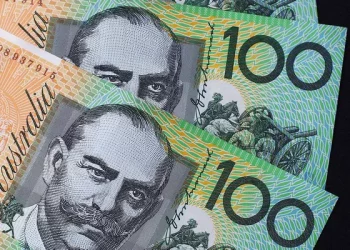The foreign exchange (forex) market is one of the largest and most liquid markets in the world, where currencies from different countries are traded against each other. Among the many currencies that are exchanged globally, the Mexican peso (MXN) stands out for its relatively strong performance against the U.S. dollar (USD) in recent years. Historically, the peso has been considered a currency of an emerging market economy, and as such, has often been subject to volatility. However, in recent times, the Mexican peso has strengthened considerably, raising questions about the factors behind its strong performance relative to the U.S. dollar.
In this article, we will explore the various factors that have contributed to the Mexican peso’s relative strength against the U.S. dollar. We will examine both macroeconomic factors, such as Mexico’s economic growth, its trade relations, and monetary policy, as well as global trends, such as the broader market environment and the U.S. dollar’s performance. By understanding the reasons behind the strength of the peso, forex traders, investors, and economic analysts can better assess the future trajectory of the currency and its impact on global markets.
Mexico’s Robust Economic Growth
One of the key factors driving the strength of the Mexican peso is Mexico’s relatively robust economic growth. The Mexican economy has grown at a steady pace over the past few years, benefiting from a range of factors including increased trade, investments, and domestic consumption.
Mexico is the 15th largest economy in the world by nominal GDP, and it has seen significant growth in key sectors such as manufacturing, automotive, and electronics. The country’s economic resilience has been especially notable in the face of global uncertainty, including the disruptions caused by the COVID-19 pandemic and the subsequent recovery. As a result, Mexico has been able to maintain positive economic growth, which boosts investor confidence in the country’s currency.
A growing economy typically leads to stronger demand for the local currency. This is because a healthy economy attracts foreign investment, which in turn increases the demand for the currency to facilitate business transactions. In the case of Mexico, a growing manufacturing sector and increased exports to the U.S. have supported demand for the peso. As Mexico continues to demonstrate growth potential, the value of the peso has been strengthened against the U.S. dollar.
The U.S.-Mexico Trade Relationship
Mexico’s close trade relationship with the United States plays a crucial role in the performance of the Mexican peso. The United States is Mexico’s largest trading partner, and the two countries have a significant amount of trade in goods and services. According to data from the U.S. Census Bureau, Mexico accounts for approximately 15% of U.S. total imports, and the U.S. accounts for around 80% of Mexico’s exports. This strong bilateral trade flow has a profound impact on the Mexican economy and, by extension, the peso.
One key aspect of the U.S.-Mexico trade relationship is the USMCA (United States-Mexico-Canada Agreement), which replaced the North American Free Trade Agreement (NAFTA) in 2020. The USMCA aims to modernize trade relations among the three countries, with provisions covering issues such as intellectual property, labor rights, and environmental protection. These updates have strengthened the trade ties between the U.S. and Mexico and contributed to increased trade and investment flows between the two countries.
A stable and positive trade relationship means that there is consistent demand for Mexican goods and services, leading to stronger inflows of foreign currency into Mexico. The resulting increase in demand for the peso helps to maintain its strength relative to the U.S. dollar. Furthermore, as the U.S. dollar remains the primary reserve currency in the world, the strength of the U.S. economy and its trade ties with Mexico directly influence the exchange rate between the two currencies.
Mexico’s Strong Tourism Sector
Tourism is another important contributor to Mexico’s economic growth and the strength of the peso. Mexico is one of the most popular tourist destinations in the world, attracting millions of visitors every year. According to the World Travel & Tourism Council (WTTC), the tourism industry in Mexico accounted for 8.7% of the country’s GDP in 2019, and it has been a major source of foreign exchange earnings.
The influx of tourists to Mexico generates significant demand for the Mexican peso, as foreign visitors need to exchange their currency for pesos to spend on goods and services during their stay. This demand helps to support the value of the peso against the U.S. dollar. In recent years, Mexico has seen a strong recovery in its tourism sector, especially in popular tourist destinations such as Cancun, Mexico City, and Los Cabos, which has further bolstered the peso.
Additionally, the Mexican government has made concerted efforts to promote tourism through marketing campaigns, infrastructure development, and the expansion of air travel connectivity. As tourism continues to grow, the peso benefits from an ongoing influx of foreign currency, strengthening its position against the U.S. dollar.
Mexico’s Stable Inflation Rate
Another important factor contributing to the strength of the Mexican peso is the country’s relatively stable inflation rate. Inflation is a key economic indicator that can affect the value of a currency. When inflation is high, the purchasing power of a currency declines, leading to a decrease in its value on the foreign exchange market. Conversely, low and stable inflation tends to support a stronger currency.
Mexico has managed to maintain a relatively stable inflation rate over the years, thanks in part to the effective monetary policies implemented by its central bank, Banco de México (Banxico). The central bank has made it a priority to keep inflation under control, using tools such as interest rate adjustments to manage price levels. By keeping inflation low, Banxico helps to preserve the purchasing power of the peso, which in turn supports its value against the U.S. dollar.
In recent years, inflation in Mexico has been relatively low compared to other emerging market economies, which has contributed to a stronger peso. This stability in inflation is one of the factors that has made the peso more attractive to foreign investors and has helped to maintain the currency’s strength relative to the U.S. dollar.
Monetary Policy and Interest Rates
The role of Mexico’s central bank, Banxico, in managing the country’s monetary policy is another key factor in the strength of the peso. Banxico has taken a cautious and disciplined approach to monetary policy, focusing on maintaining price stability and controlling inflation. This has helped to create an environment of economic stability, which is favorable for the peso.
One of the key tools that Banxico uses to manage monetary policy is interest rates. By adjusting interest rates, Banxico can influence the flow of capital into the country. Higher interest rates typically attract foreign investment, as investors seek higher returns on their investments. This inflow of capital leads to increased demand for the peso, which strengthens its value relative to the U.S. dollar.
In recent years, Banxico has raised interest rates in response to global inflationary pressures, particularly during the COVID-19 pandemic. These rate hikes have supported the peso by attracting foreign capital, which has contributed to the currency’s strength against the U.S. dollar. By maintaining a disciplined approach to monetary policy, Banxico has helped to ensure that the peso remains competitive in the global market.
Global Market Conditions and the U.S. Dollar’s Weakness
In addition to domestic factors, global market conditions also play a role in the performance of the Mexican peso. One of the most important global factors influencing the peso is the strength of the U.S. dollar itself. The U.S. dollar is the world’s primary reserve currency, and its value fluctuates in response to a range of global economic and geopolitical factors.
During periods when the U.S. dollar is weak, emerging market currencies like the Mexican peso tend to perform better. This is because a weaker dollar makes U.S. assets less attractive to foreign investors, leading to capital outflows from the U.S. and inflows into emerging markets. As capital flows into Mexico, the demand for the peso increases, which strengthens the currency against the dollar.
In recent years, the U.S. dollar has faced periods of weakness due to factors such as low interest rates, expansive monetary policy by the U.S. Federal Reserve, and global trade tensions. As a result, the peso has benefitted from these global trends, gaining strength relative to the dollar.
Investor Sentiment and Speculation
Finally, investor sentiment and speculation can play a significant role in the strength of the Mexican peso. Currency markets are heavily influenced by the expectations of traders and investors, who react to news, events, and economic data. When investors perceive that Mexico’s economic prospects are strong, they may be more inclined to buy Mexican assets, including government bonds and stocks, which in turn boosts demand for the peso.
Speculators in the forex market may also play a role in driving the value of the peso. When there is widespread optimism about Mexico’s economy, investors may bet on the continued strength of the peso, leading to increased demand for the currency. This speculative activity can create positive momentum for the peso, reinforcing its strength against the U.S. dollar.
Conclusion
The strength of the Mexican peso against the U.S. dollar can be attributed to a combination of domestic and global factors. Mexico’s robust economic growth, strong trade relations with the United States, thriving tourism sector, stable inflation, and disciplined monetary policy have all contributed to the peso’s performance. Additionally, global market conditions, such as the weakness of the U.S. dollar, and investor sentiment also play important roles in determining the value of the peso.
While there are still risks and uncertainties that could affect the peso’s performance in the future, including political changes, commodity price fluctuations, and global economic shocks, Mexico’s economic fundamentals have provided a strong foundation for the peso’s strength in recent years. As long as these factors remain favorable, the Mexican peso is likely to continue its strong performance against the U.S. dollar.
Related Topics:

























